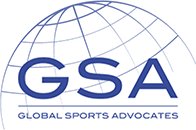In every sport, what goes on behind the scenes is just as important as the game or match itself. Our blog explains the legal concerns that affect elite athletes and other sports stakeholders at every level, including anti-doping violations, eligibility issues, contract disputes, and misconduct allegations. Learn what mistakes to avoid and how an attorney can help you resolve the issue at hand so you can get back to enjoying the sport you love.
- Page 1
-
What Professional Footballers Need to Know About FIFA Player Image Rights and Commercial Licensing RulesLearn how FIFA regulates player image rights, commercial partnerships, and licensing agreements. Our sports lawyers help athletes protect their brand.
-
FIFA International Transfer Rules: What Every Footballer Needs to KnowOur experienced international sports law lawyers help you understand the key FIFA regulations on transfers, contracts, and training compensation.
-
Paul Greene Takes the Stage at the World Aquatics Anti-Doping Conference in SingaporeGlobal Sports Advocates' Paul Greene presents on preventing positive doping test results at the World Aquatics Anti-Doping Conference in Singapore in July 2025.
-
Confused by a Rejected NIL Deal? Here's What Athletes Need to Know About the College Sports CommissionThe newly formed College Sports Commission is rejecting NIL deals lacking a valid business purpose. Get legal help navigating new enforcement standards.
-
Our International Sports Lawyers Help Athletes Understand Their Rights During TestingLearn about your rights when providing samples for testing and how our experienced anti-doping lawyers can help protect your interests.
-
CAS Ad Hoc Division Provides Expedited Dispute Resolution for FIFA Club World Cup 2025CAS will establish an Ad Hoc Division for disputes during the FIFA Club World Cup 2025. Our sports arbitration lawyers explain the process.
-
Global Sports Advocates Highlighted in Chambers USA 2025 Sports Law RankingsFor the fourth year in a row, Global Sports Advocates has been ranked as one of the nation's top sports law firms by Chambers USA.
-
CAS Rules in Favor of World Champion Norah Jeruto in Landmark Anti-Doping CaseCourt of Arbitration for Sport dismisses doping allegations against world champion and Global Sports Advocates client Norah Jeruto.
-
Global Sports Advocates Welcomes Attorney Ryan Lipes, Former Federal Prosecutor and U.S. Center for SafeSport Senior Legal CounselGlobal Sports Advocates is pleased to announce the addition of Ryan Lipes to its team of sports law attorneys.
-
How Contaminated Meat Could Trigger a Positive Anti-Doping TestLearn how meat contamination can lead to failed drug tests and how our international anti-doping lawyers can help falsely accused athletes.
-
Our International Anti-Doping Lawyers Help Clients Navigate the Therapeutic Use Exemption Process for International-Level AthletesNeed a TUE for medical reasons? Our anti-doping lawyers help international-level athletes get approval to use prohibited substances or methods legally.
-
Whereabouts Requirements Explained for International-Level AthletesUnderstand the whereabouts requirements International-Level Athletes must meet to comply with anti-doping rules and avoid sanctions.
